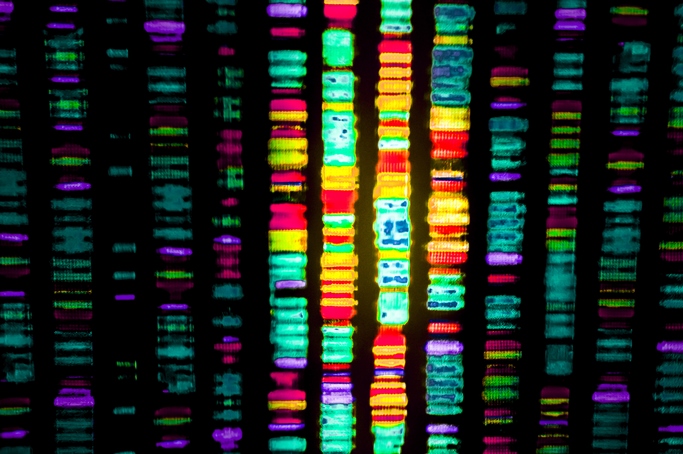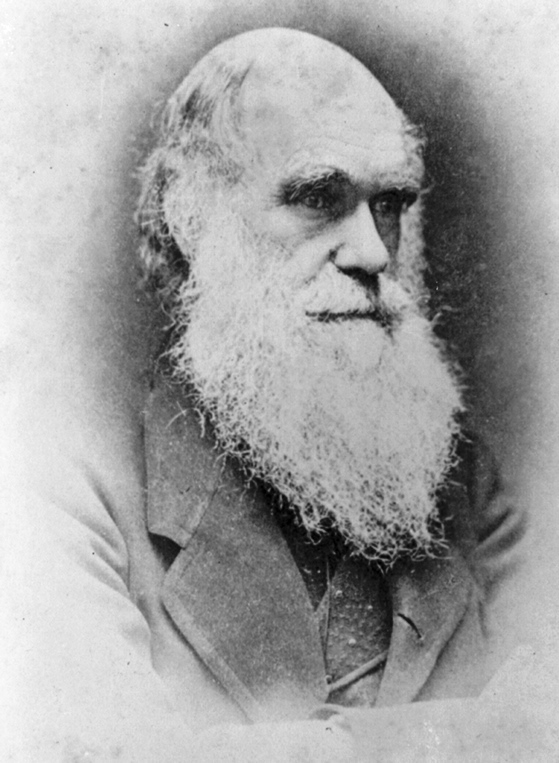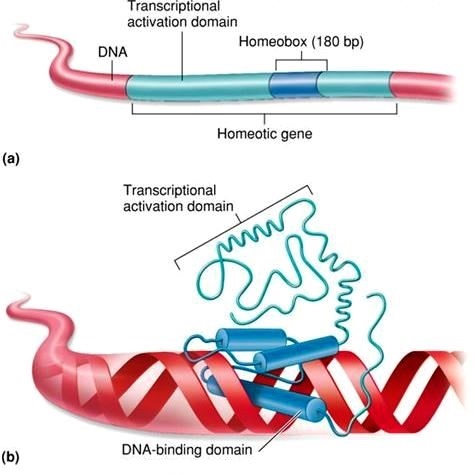Key Concepts
A field of biological investigation concerned with the overlap of evolution and development. Evolutionary developmental biology, or evolutionary embryology, combines the disciplines of developmental biology (or embryology) and evolutionary biology. Informally termed evo-devo, evolutionary developmental biology attempts to study how changes in the embryonic development of individual organisms relate to the larger-scale evolutionary changes that occur between generations (Fig. 1). Overall, the intersections of development and evolution are of paramount importance for creating a fully integrated theory of biology. See also: Animal evolution; Developmental biology; Embryology; Evolution; Macroevolution; Plant evolution

History
Prior to and into the nineteenth century, the word "evolution" had a completely different meaning from its usage today. Then, it was used to describe a particular type of embryonic or larval development—the preformation and unfolding of a more or less fully formed organism from an embryonic or larval stage (for example, a butterfly from a caterpillar, or aphids from the body of an adult female). In fact, Charles Darwin (Fig. 2) did not use the word "evolution" per se in On the Origin of Species, which was published in 1859, although "evolved" was the final word of his book. To reach its present-day definition, the term "evolution" had to undergo a slow transformation from development within a single generation to transformation (transmutation) between generations. See also: Charles Darwin and his theory of evolution

As for the field of developmental biology, in the nineteenth century, embryology (referring to the study of embryonic development) was a progressive field in biology, with researchers describing normal development and then manipulating animal embryos [experimental or physiological embryology (also known as developmental mechanics)] in search of altered outcomes that would help explain how development occurred. In addition, scientists were looking for similarities and differences in development between species, initially in a comparative context and then in an evolutionary context (as evolutionary embryology, starting in 1859). Late-nineteenth-century evolutionary embryologists, such as Ernst Haeckel, Karl Gegenbaur, Francis Balfour, E. Ray Lankester, and others (including Charles Darwin), used comparative embryology to provide evidence for schemes of animal classification, to establish phylogenetic relationships among animals (common descent from a single universal ancestor), and as a major class of evidence for evolution—that is, descent with modification. During this time period, embryologists observed that, from the earliest stages of development, embryos of diverse species pass through conserved embryonic stages using the same developmental processes of cell division, migration, differentiation, and morphogenesis. It was also observed that the various anatomical structures arise from equivalent (homologous) germ layers. Thus, the foundation was laid for characterizing evolutionary relationships based in part on the similarities and differences in developmental processes. See also: Germ layers; Morphogenesis; Phylogeny; Speciation; Species concept
The twentieth century saw the application of genetics and molecular biology to development and evolution. Molecular evolutionary theories began to emerge describing how genetics influenced life history and phenotypic plasticity [the property of a genotype to produce more than one phenotype: for example, the tadpole and adult frog, or summer and winter forms (morphs) of a single butterfly species]. At the same time, developmental biologists employed molecular biology toward understanding how genes function in the developing organism. Still, evolution and development emerged as two branches of biology, with most researchers in one field overlooking the progress in the other. However, the two central pillars of evolution—natural variation and natural selection—need to be fully appreciated by the community of developmental biologists. Similarly, gene regulation of developmental processes must be considered by evolutionary theorists. By combining these disciplines into an integrated theory of biology, that is, a twenty-first-century biology, the goal is to seek and explain the ultimate and proximate causes for the origin and diversity of life. See also: Developmental genetics; Gene; Genetics; Molecular biology
Relationship between development and evolution
Because natural selection operates equally on embryonic through adult stages, changes in development can mediate evolution in any life history stage. The apparent constancy of embryonic stages and the seeming lack of variation among individuals of a given embryonic stage in a given species reflect the actions of stabilizing selection (which concentrates features around a norm) and of differential survival (which removes individuals who deviate from that norm so early in development that they do not survive to be studied). Such evolutionary processes explain the conservation, stability, and seeming invariance of development (reflected in conserved embryonic stages and body plans) in the same way that selection and differential survival and reproduction explain both the maintenance and the transformation of species.
There are a number of major development processes and evolutionary changes that need to be understood more completely in this context. These include the basis for the different body plans of multicellular organisms, especially those of plants, animals, and fungi; how transformation within and between body plans occurs; and how (or whether) major transitions, such as the origin of the limbs of terrestrial vertebrates from the fins of fishes and the origin of flowers in land plants, are associated with the origin of new groups of organisms. The integrated approach to development and evolution seeks a comprehensive understanding of how mechanisms operating during embryonic development mediate evolutionary change. The fundamental rationale is that no feature (character or trait) of a multicellular organism can change over evolutionary time without modification of development.
The hereditary information [that is, deoxyribonucleic acid (DNA)] is transferred from generation to generation as genes, and various processes [for example, methylation (addition of a methyl group), genomic imprinting (a phenomenon whereby one of the two alleles, or alternative gene forms, at a gene locus is preferentially expressed depending upon the parent of origin), chromosomal changes, and reduction in chromosome number] help to modify gene action. In order for changes (mutations) to enable genetic changes that can influence evolutionary change, the genes controlling development, and therefore developmental processes, must be altered. One key intersection of molecular biology/molecular genetics with development came about through the discovery of a group of key developmental genes (homeotic/homeobox/Hox genes; Fig. 3) that act as transcription factors and that are involved in the specification of fundamental animal features, including an anterior-posterior (A-P) axis, bilateral symmetry, and regional (often segmental) organization of body parts/segments/regions. See also: Deoxyribonucleic acid (DNA); Homeotic (Hox) genes

Other families of developmental genes (bone morphogenetic proteins, fibroblast growth factors, and hedgehog genes) that act as signaling molecules provide the upstream signals that activate critical genetic pathways. Signaling by these molecules ultimately influences all aspects of development, including cell lineage decisions in the developing limbs, kidneys, teeth, heart, and skeleton. Most developmental genes are evolutionarily conserved in their cellular functions. Some have even been shown to act as master regulators of organ development conserved across the animal kingdom. One example is the Pax-6 gene, which controls eye development in both vertebrates and insects. This was a surprising discovery, considering the morphological disparity between vertebrate and insect eyes. See also: Eye (invertebrate); Eye (vertebrate)
Gene regulatory networks and the future of evo-devo
The continuing focus of evo-devo research has centered on a field studying the interaction of multiple genes and molecular pathways, referred to as gene regulatory networks. The developing embryo is a coordinated, highly dynamic system requiring rapid changes in cell behavior, all controlled at the molecular level. Therefore, complex molecular networks, where developmental genes and feedback networks regulate specific pathways, are present and are being analyzed by scientists. Knowledge of a gene network means that the network can be manipulated to generate altered developmental programs and thus altered morphological outcomes. This type of manipulation/experimentation is akin to evolutionary experiments and has been employed in various evo-devo studies, including research programs seeking to discover ancestral larval stages, the universal common ancestor of animals, and the dinosaur ancestor of birds. The placement of gene cascades within the context of specific lineages of cells (for example, muscle-, skeleton-, or heart-forming cells) and specific cell-to-cell or tissue-to-tissue interactions (such as those that regulate feather, limb, kidney, and tooth development) is revealing the hierarchies of interactions required to produce unique attributes of various organisms. Applying this knowledge in an evolutionary context leads to the integration of research to discover the mechanisms behind developmental (ontogenetic) and evolutionary (phylogenetic) transformations. Consequently, evo-devo constitutes one of the most exciting, vigorous, challenging, and cutting-edge sciences of the present day.





